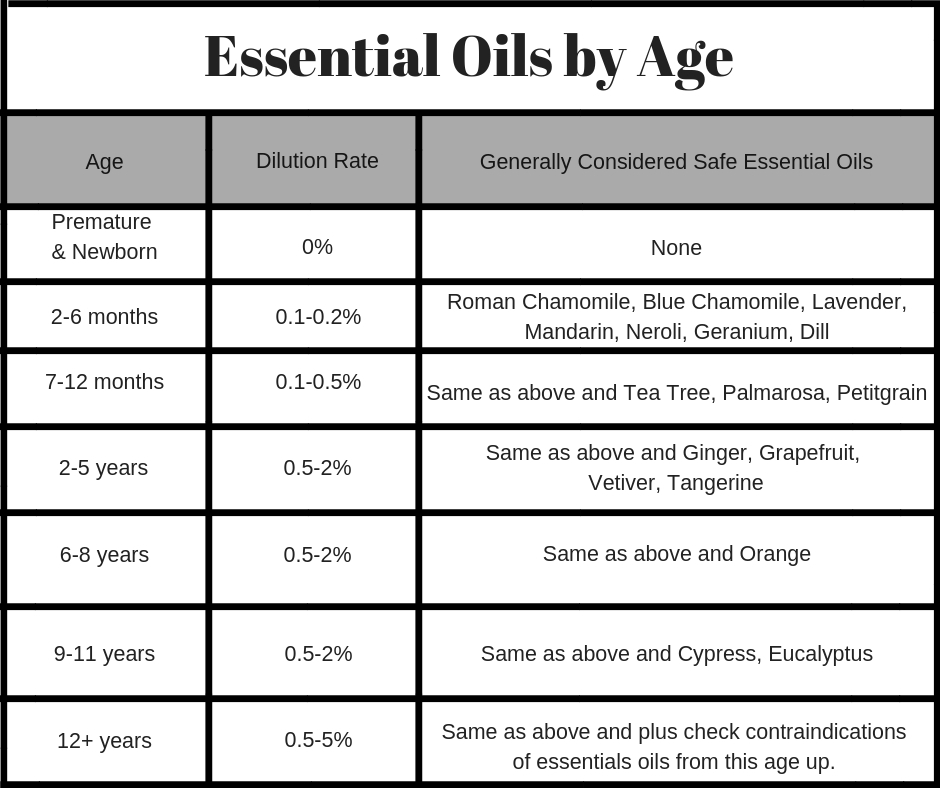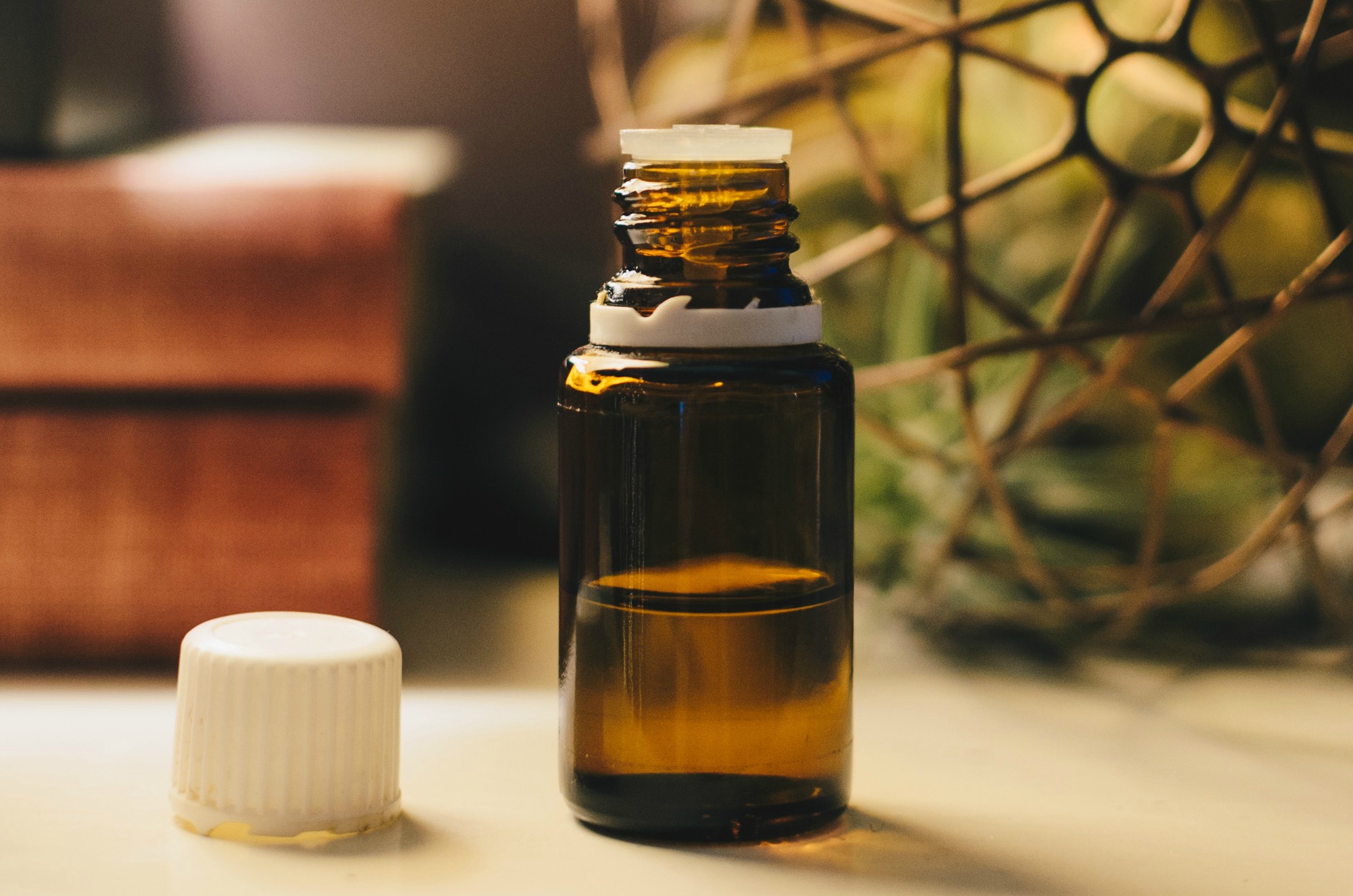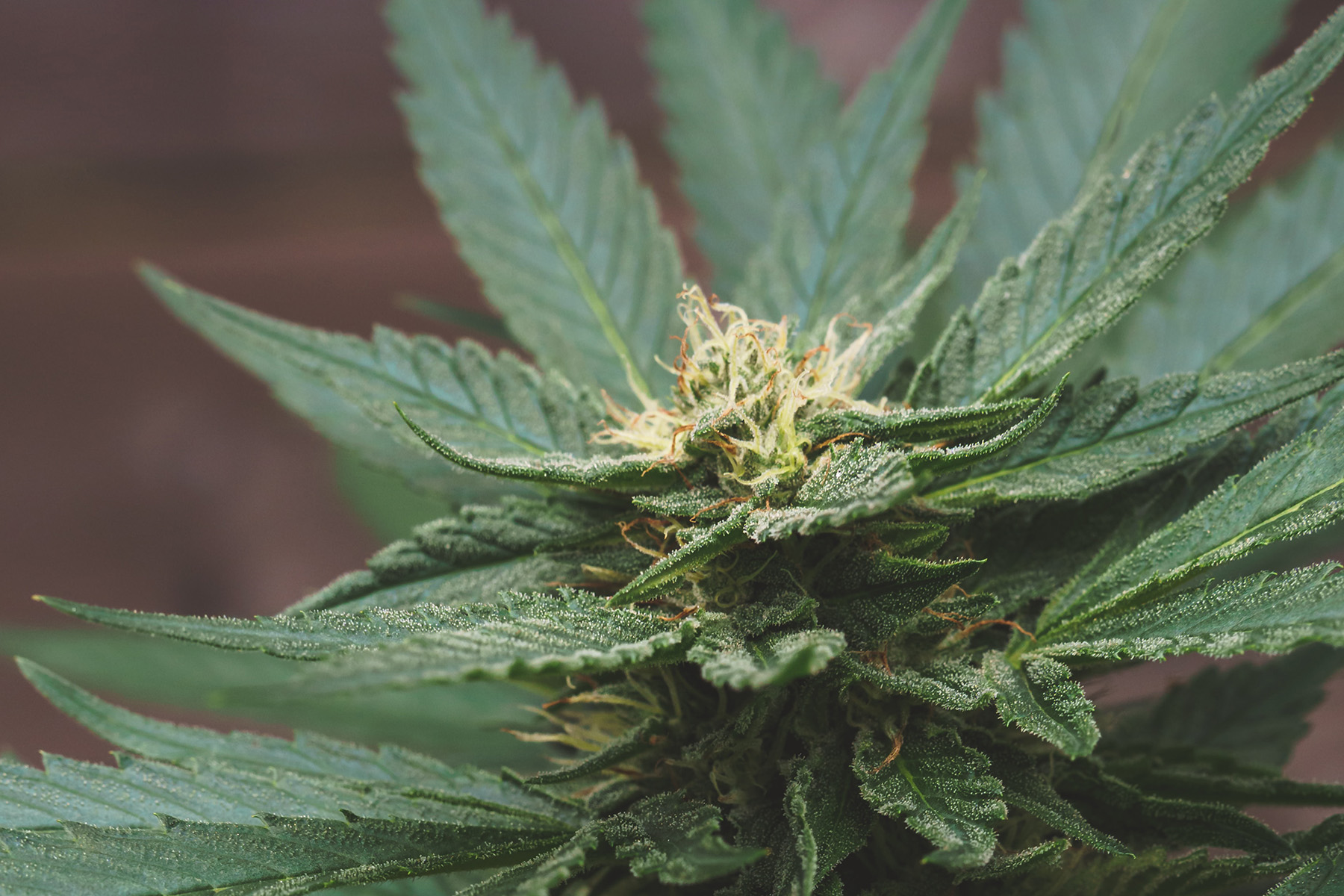Absolutely, always, dilute essential oils when using them with babies, children and the elderly. The permeability of skin, metabolism, medical history, contraindications and ability to process essential oils can be impacted by health, age, medications and size of the person using essential oils.
Essential oils make the list of the top 25 substances most frequently involved in pediatric exposures in the 2016 American Association of Poison Control Centers report, with a whopping 13,972 exposures (American Association of Poison Control Centers 2016). Please always use caution when storing, diffusing, and apply essential oils if you have children. We’ve created this handy dandy chart with the essential oils that are generally consider safe for children and dilution rates.

Diffusing Around Children
Public spaces are not really the appropriate place to share your enthusiasm for essential oils. This is especially true when it comes to schools, nurseries and day cares. Essential oils are natural medicine, and you do not know the health history, allergies and sensitivities of a given population. Also many of the essential oils that I have come across being diffused in classrooms are simply too strong for the respiratory systems of many students. Unless you are trained in essential oil chemistry you may miss some big warning bells. For instance, Eucalyptus is not safe for children under the age of three. However, I have smelled it wafting from the church nursery and read posts from moms putting it right on their baby’s feet!
In the article, “Risk vs. benefit: using potent antimicrobial essential oils with children,” Lauren Bridges wrote, “Although some essential oils may be potent antimicrobials, does the way they are currently used preserve the integrity of our children’s health? There may be cause for concern, for three reasons. One, the most potently antimicrobial essential oils also tend to be the most risky in terms of adverse skin reactions (Tisserand & Young 2014). Two, although there is not much evidence so far of bacterial resistance to essential oils, it is almost inevitable that this will eventually happen. And three, though essential oils are often touted as ‘immune boosting,’ there is almost no clinical evidence to support such claims, and in the case of young children, enthusiastic use of essential oils may actually inhibit normal immune development” (Lauren Bridges 2017).
In her conclusion, Bridges says, “With effective options available that are less risky than the ‘big guns,’ using clove, cinnamon, thyme thymol, oregano and similar oils for every little sniffle is tantamount to dumping a gallon of water on a match to extinguish a flame that could have been snuffed out with a little sprinkle. It is, in most cases, quite unnecessary” (Lauren Bridges 2017).
I have found that in schools, nurseries and daycares people are not even waiting for the sniffle to arrive. They are prophylactically using essential oils every single day around our children. Blends containing clove, cinnamon, thyme thymol, oregano and eucalyptus are being used in small closed spaces without the informed consent of parents. As a parent of three children, I chose to make all the medical decisions for my child, whether it is using natural medicine or conventional medicine. It is not the place of teachers, administrators, daycare providers and nursery workers to make those decisions as to what each child is over-exposed to, let alone exposed to at all.
*Sections from The Art, Science and Business of Aromatherapy and The Unspoken Truth About Essential Oils.






